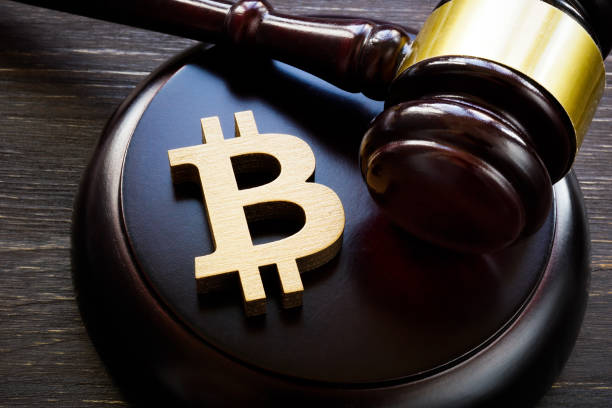Cryptocurrencies have grown from a niche digital asset to a global financial phenomenon, attracting the interest of investors, tech enthusiasts, and governments alike. However, as the cryptocurrency market continues to expand, it has also raised significant concerns regarding consumer protection, financial stability, and legal oversight. Governments and regulatory bodies around the world are struggling to find a balance between fostering innovation in the cryptocurrency space and protecting investors from fraud, market manipulation, and other risks.
This article explores the challenges governments face in regulating cryptocurrencies, the potential risks to investors, and the benefits that could arise from a well-designed regulatory framework.
The Growth of Cryptocurrencies and the Need for Regulation
Cryptocurrencies, led by Bitcoin and Ethereum, have disrupted traditional finance by offering decentralized, borderless, and often anonymous transactions. Their appeal lies in their ability to bypass centralized financial institutions like banks, offering users greater control over their money. The decentralized nature of cryptocurrencies has also sparked innovation in blockchain technology, with potential applications in sectors ranging from supply chain management to voting systems.
Despite their growing popularity, the cryptocurrency market is volatile and largely unregulated, which presents challenges. The lack of clear legal guidelines has led to a wild west of innovation, but also significant risks for investors and the broader financial system. Issues like fraud, security breaches, money laundering, and tax evasion have raised alarms among regulators who are concerned about the potential negative impact on both individual investors and global financial stability.

Challenges in Regulating Cryptocurrencies
- Decentralization and Anonymity: One of the defining characteristics of cryptocurrencies is their decentralized nature, meaning they operate without the need for a central authority like a government or bank. This makes it difficult for regulators to monitor and control transactions. Moreover, the pseudonymous nature of many cryptocurrencies (where users’ identities are hidden behind cryptographic addresses) complicates efforts to trace fraudulent activities, enforce anti-money laundering (AML) laws, and prevent tax evasion.
- Global Nature of Cryptocurrencies: Cryptocurrencies do not adhere to borders, and transactions can happen across countries in real time. This presents challenges for national regulators, as the decentralized nature of the blockchain technology that underpins cryptocurrencies makes it difficult to enforce local laws. Different countries have different approaches to cryptocurrency regulation, ranging from complete bans (such as in China) to regulatory frameworks that embrace innovation (such as in Switzerland). This patchwork of regulations complicates efforts to create cohesive global oversight.
- Volatility and Market Manipulation: Cryptocurrencies are notorious for their volatility, with prices swinging dramatically over short periods. This has led to concerns about market manipulation, with some players using pump-and-dump schemes, coordinated trading, or insider information to artificially inflate or deflate prices. The lack of regulation makes it easier for such practices to go unnoticed, increasing risks for retail investors and destabilizing the market.
- Security Risks and Fraud: The cryptocurrency space has been plagued by security breaches, hacking incidents, and fraudulent schemes. High-profile incidents like the Mt. Gox exchange hack and the rise of Ponzi schemes have underscored the risks associated with investing in digital assets. While blockchain technology itself is secure, exchanges and wallets that store cryptocurrencies can be vulnerable to cyberattacks. Additionally, a lack of consumer protection laws means investors have little recourse when they fall victim to fraud.
- Lack of Consumer Protection: Traditional financial systems are heavily regulated to protect consumers from fraud, market manipulation, and other risks. In the cryptocurrency world, however, consumer protections are often limited. Many investors, especially newcomers, may not fully understand the risks they are taking on, and with the absence of standard regulatory safeguards, they may be more susceptible to exploitation. As a result, there is a growing call for regulatory bodies to step in and provide clearer guidelines to protect consumers.

The Risks to Investors
- Loss of Capital: The volatility of cryptocurrencies presents a significant risk for investors. The value of assets like Bitcoin and Ethereum can fluctuate by hundreds or even thousands of dollars in a matter of hours. Investors who fail to understand these risks may lose substantial amounts of money, especially if they are not prepared for sudden market downturns.
- Fraud and Scams: The lack of regulation in the cryptocurrency space has created an environment ripe for fraud. Scams such as Ponzi schemes, fake Initial Coin Offerings (ICOs), and pump-and-dump tactics are prevalent. Investors often find themselves tricked into purchasing worthless or manipulated assets, with little recourse for recovery.
- Lack of Insurance or Recourse: Unlike traditional financial assets, cryptocurrencies are not typically insured by government-backed schemes like the Federal Deposit Insurance Corporation (FDIC) in the U.S. This means that if an exchange is hacked or an investor loses their private keys, there is no guarantee that they will recover their funds. In traditional financial systems, regulatory bodies and insurance mechanisms offer a level of protection that cryptocurrency markets currently lack.
- Complexity and Lack of Knowledge: Many cryptocurrency investors may not fully understand the complexities of blockchain technology, cryptocurrency wallets, or secure storage practices. Without proper education and awareness, investors are vulnerable to making mistakes or falling victim to fraudulent schemes. The lack of regulatory oversight exacerbates this issue, as there are no standard practices or requirements for investor education.
The Potential Benefits of Proper Cryptocurrency Regulation
- Enhanced Consumer Protection: One of the main benefits of regulation is the protection it could offer to consumers. A regulatory framework could introduce safeguards to ensure that investors are properly informed about the risks involved in cryptocurrency trading. It could also provide avenues for dispute resolution and compensation in the event of fraud or loss, improving trust in the market.
- Reduced Fraud and Market Manipulation: Clear regulations and enforcement mechanisms could help reduce fraudulent activities in the cryptocurrency space. Regulations focused on transparency, anti-money laundering (AML) practices, and know-your-customer (KYC) requirements could make it more difficult for bad actors to manipulate markets or engage in illicit activities. This would increase investor confidence and help stabilize the market.
- Increased Legitimacy and Institutional Investment: Proper regulation could pave the way for greater institutional investment in cryptocurrencies. Many institutional investors, including banks and hedge funds, have been hesitant to enter the market due to its lack of regulatory clarity and security concerns. A clear and robust regulatory framework could give institutional investors the confidence they need to allocate capital into the cryptocurrency space, driving further innovation and growth.
- Financial Stability: By establishing rules that ensure proper governance, transparency, and oversight, regulations could help mitigate the risks posed by extreme market volatility. A regulated cryptocurrency market would likely attract long-term investors, encouraging stability and reducing the chances of speculative bubbles.
- Innovation and Economic Growth: Cryptocurrency and blockchain technology hold significant potential for innovation in a variety of sectors, including finance, healthcare, and supply chain management. By providing clear regulatory guidance, governments can foster innovation while ensuring that the risks are appropriately managed. Regulation could support the development of new financial products and services that benefit both consumers and businesses.
Conclusion: Striking the Right Balance
Cryptocurrency regulation is a complex and evolving issue that requires balancing innovation with consumer protection. On the one hand, regulators must ensure that the cryptocurrency market does not expose investors to excessive risks or allow fraudulent activities to flourish. On the other hand, overly restrictive regulations could stifle innovation and slow the development of blockchain technologies with transformative potential.
Governments around the world are beginning to recognize the need for a balanced approach to cryptocurrency regulation. By creating clear guidelines that foster transparency, protect consumers, and support innovation, they can create a more secure and stable environment for cryptocurrency markets. While it is still early in the regulatory process, the future of cryptocurrency regulation will likely shape how digital currencies evolve, how investors engage with them, and how they integrate into the broader global economy.












